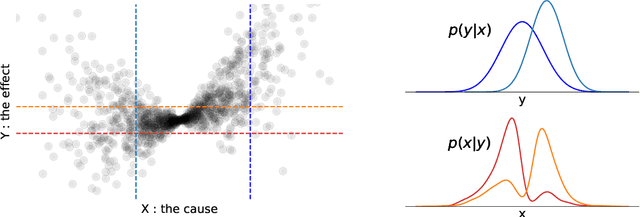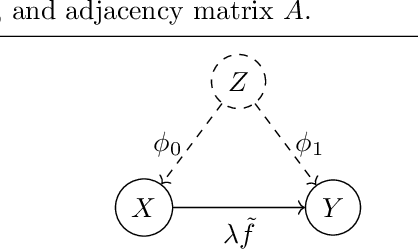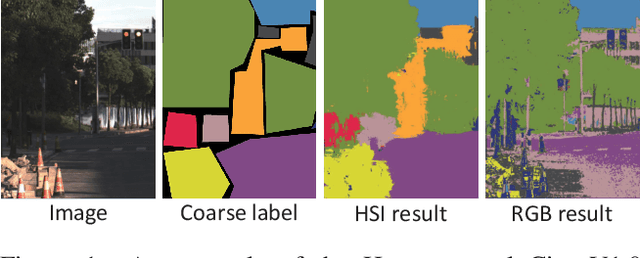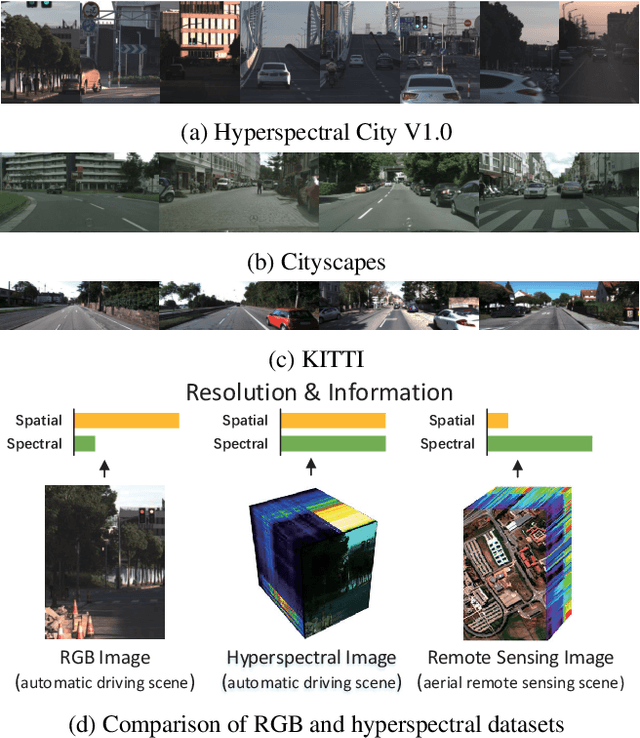Yuxing Huang
A Skewness-Based Criterion for Addressing Heteroscedastic Noise in Causal Discovery
Oct 08, 2024



Abstract:Real-world data often violates the equal-variance assumption (homoscedasticity), making it essential to account for heteroscedastic noise in causal discovery. In this work, we explore heteroscedastic symmetric noise models (HSNMs), where the effect $Y$ is modeled as $Y = f(X) + \sigma(X)N$, with $X$ as the cause and $N$ as independent noise following a symmetric distribution. We introduce a novel criterion for identifying HSNMs based on the skewness of the score (i.e., the gradient of the log density) of the data distribution. This criterion establishes a computationally tractable measurement that is zero in the causal direction but nonzero in the anticausal direction, enabling the causal direction discovery. We extend this skewness-based criterion to the multivariate setting and propose SkewScore, an algorithm that handles heteroscedastic noise without requiring the extraction of exogenous noise. We also conduct a case study on the robustness of SkewScore in a bivariate model with a latent confounder, providing theoretical insights into its performance. Empirical studies further validate the effectiveness of the proposed method.
Frame Pairwise Distance Loss for Weakly-supervised Sound Event Detection
Sep 21, 2023



Abstract:Weakly-supervised learning has emerged as a promising approach to leverage limited labeled data in various domains by bridging the gap between fully supervised methods and unsupervised techniques. Acquisition of strong annotations for detecting sound events is prohibitively expensive, making weakly supervised learning a more cost-effective and broadly applicable alternative. In order to enhance the recognition rate of the learning of detection of weakly-supervised sound events, we introduce a Frame Pairwise Distance (FPD) loss branch, complemented with a minimal amount of synthesized data. The corresponding sampling and label processing strategies are also proposed. Two distinct distance metrics are employed to evaluate the proposed approach. Finally, the method is validated on the standard DCASE dataset. The obtained experimental results corroborated the efficacy of this approach.
TMoE-P: Towards the Pareto Optimum for Multivariate Soft Sensors
Feb 21, 2023



Abstract:Multi-variate soft sensor seeks accurate estimation of multiple quality variables using measurable process variables, which have emerged as a key factor in improving the quality of industrial manufacturing. The current progress stays in some direct applications of multitask network architectures; however, there are two fundamental issues remain yet to be investigated with these approaches: (1) negative transfer, where sharing representations despite the difference of discriminate representations for different objectives degrades performance; (2) seesaw phenomenon, where the optimizer focuses on one dominant yet simple objective at the expense of others. In this study, we reformulate the multi-variate soft sensor to a multi-objective problem, to address both issues and advance state-of-the-art performance. To handle the negative transfer issue, we first propose an Objective-aware Mixture-of-Experts (OMoE) module, utilizing objective-specific and objective-shared experts for parameter sharing while maintaining the distinction between objectives. To address the seesaw phenomenon, we then propose a Pareto Objective Routing (POR) module, adjusting the weights of learning objectives dynamically to achieve the Pareto optimum, with solid theoretical supports. We further present a Task-aware Mixture-of-Experts framework for achieving the Pareto optimum (TMoE-P) in multi-variate soft sensor, which consists of a stacked OMoE module and a POR module. We illustrate the efficacy of TMoE-P with an open soft sensor benchmark, where TMoE-P effectively alleviates the negative transfer and seesaw issues and outperforms the baseline models.
Hyperspectral Image Semantic Segmentation in Cityscapes
Dec 18, 2020



Abstract:High-resolution hyperspectral images (HSIs) contain the response of each pixel in different spectral bands, which can be used to effectively distinguish various objects in complex scenes. While HSI cameras have become low cost, algorithms based on it has not been well exploited. In this paper, we focus on a novel topic, semi-supervised semantic segmentation in cityscapes using HSIs.It is based on the idea that high-resolution HSIs in city scenes contain rich spectral information, which can be easily associated to semantics without manual labeling. Therefore, it enables low cost, highly reliable semantic segmentation in complex scenes.Specifically, in this paper, we introduce a semi-supervised HSI semantic segmentation network, which utilizes spectral information to improve the coarse labels to a finer degree.The experimental results show that our method can obtain highly competitive labels and even have higher edge fineness than artificial fine labels in some classes. At the same time, the results also show that the optimized labels can effectively improve the effect of semantic segmentation. The combination of HSIs and semantic segmentation proves that HSIs have great potential in high-level visual tasks.
 Add to Chrome
Add to Chrome Add to Firefox
Add to Firefox Add to Edge
Add to Edge